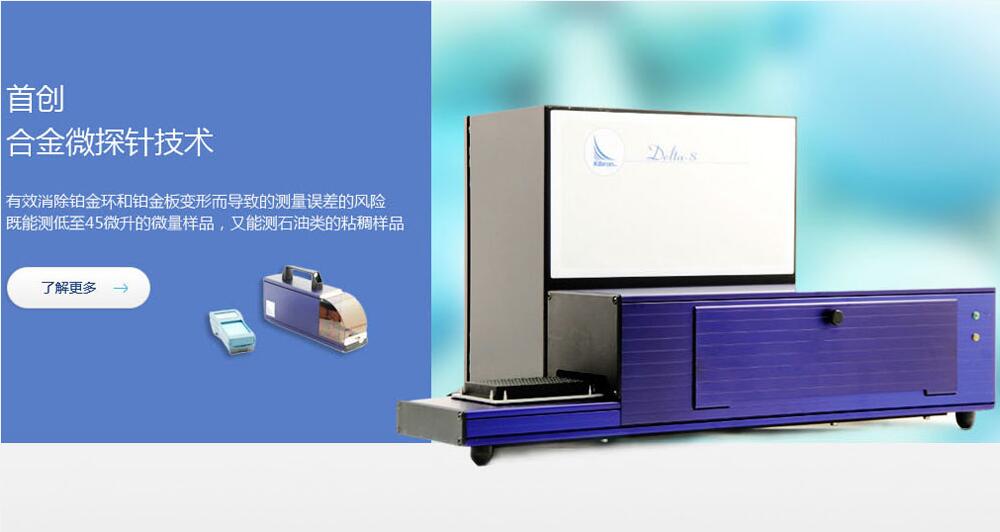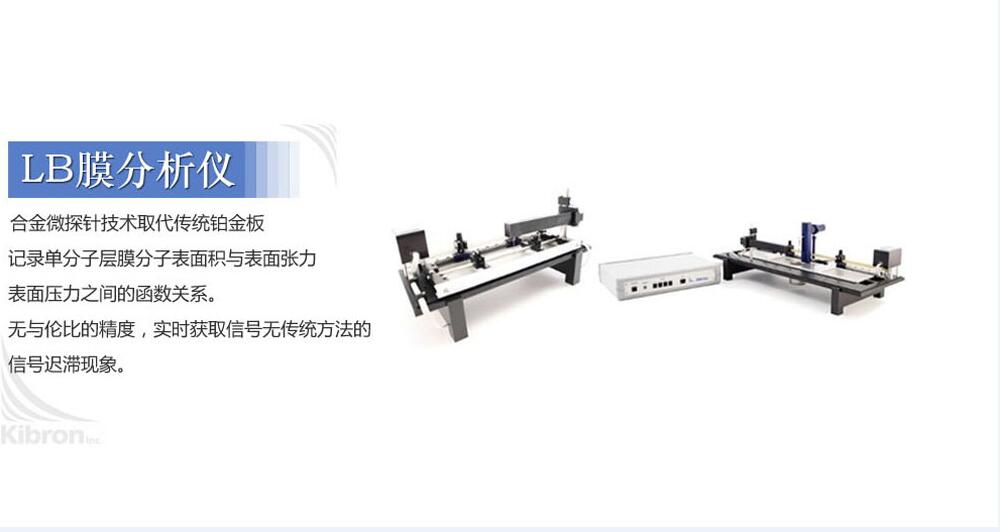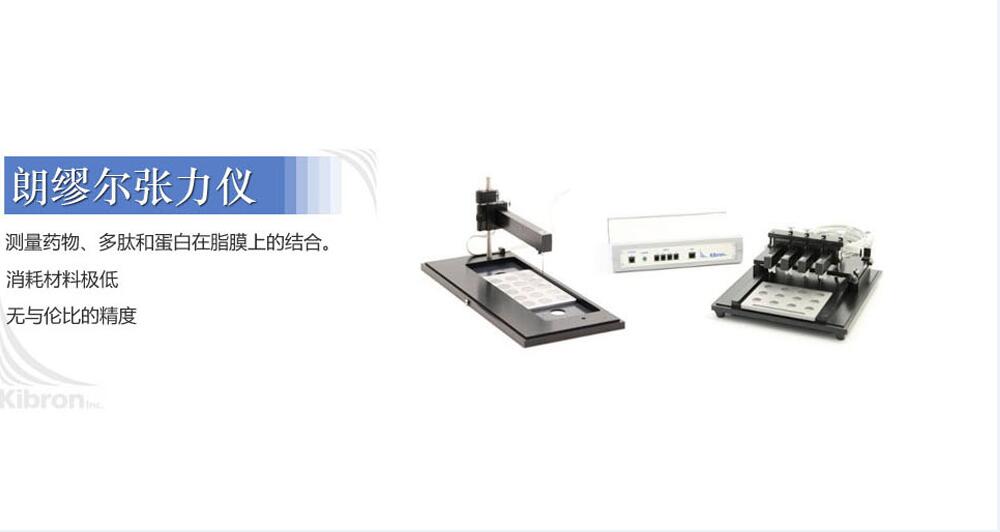合作客戶/
拜耳公司 |
同濟大學 |
聯合大學 |
美國保潔 |
美國強生 |
瑞士羅氏 |
相關新聞Info
推薦新聞Info
-
> 量化改進差分毛細管法測試高溫液態瀝青表面張力精度(下)
> 量化改進差分毛細管法測試高溫液態瀝青表面張力精度(上)
> 連接基對3種表面活性劑GSS271、GSS371和GSS471動態表面性能的影響(下)
> 連接基對3種表面活性劑GSS271、GSS371和GSS471動態表面性能的影響(上)
> 高鹽油藏下兩性/陰離子表面活性劑協同獲得油水超低界面張力的方法(三)
> 高鹽油藏下兩性/陰離子表面活性劑協同獲得油水超低界面張力的方法(二)
> 高鹽油藏下兩性/陰離子表面活性劑協同獲得油水超低界面張力的方法(一)
> 棕櫚酸酯淀粉糊液理化性質及替代洗衣粉配方中的LAS去污系數研究(三)
> 棕櫚酸酯淀粉糊液理化性質及替代洗衣粉配方中的LAS去污系數研究(二)
> 棕櫚酸酯淀粉糊液理化性質及替代洗衣粉配方中的LAS去污系數研究(一)
稻葉表面特性及霧滴在傾角稻葉上的沉積行為
來源:中國農業科學 瀏覽 1232 次 發布時間:2022-10-13
徐廣春,顧中言,徐德進,許小龍
目的研究水稻葉片的表面特性和有機硅助劑Silwet-408溶液的單個霧滴在30°、45°和60°3個傾角水稻葉片正、反面的行為,以期為農藥霧滴對靶葉面滯留控制機制提供依據。方法利用掃描電鏡觀察水稻葉片的表面特性,并通過Zisman圖法測定稻葉的臨界表面張力。同時測定0、3.91、7.81、15.63、31.25、62.50、125.00和250.00 mg·L-18個濃度的Silwet-408溶液的表面張力后,利用表面張力法測定出Silwet-408的臨界膠束濃度,并借助于接觸角測量儀測定8個溶液的單個霧滴在3個傾角水稻葉片上的接觸角。
結果電鏡觀察發現水稻葉片正、反面存在3種類型的絨毛,同時表面布滿了乳頭狀的突起,其密度分別為(12.4±0.7)×103和(7.6±0.8)×103個/mm2且差異顯著;氣孔長度和氣孔密度間均無顯著差異。Silwet-408的臨界膠束濃度為78.5 mg·L-1,與之相對應的溶液的表面張力為20.77 mN·m-1。水稻葉片正、反面的臨界表面張力估值分別為29.90和31.22 mN·m-1。在所測定的溶液中,濃度為0、3.91、7.81 mg·L-1溶液的表面張力大于稻葉的臨界表面張力且Silwet-408濃度小于臨界膠束濃度,這3個濃度溶液的霧滴將直接從不同傾角水稻葉片上滾落。
濃度為15.63、31.25、62.50 mg·L-1溶液的表面張力小于稻葉的臨界表面張力且Silwet-408濃度小于臨界膠束濃度,15.63和31.25 mg·L-1溶液的霧滴在傾角較低時(30°)能黏附葉片上,較高時(60°)滾落;62.50 mg·L-1溶液的霧滴能黏附在稻葉上,不同傾角間的接觸角變化率和潤濕滯后存在差異;125.00和250.00 mg·L-1溶液的表面張力小于稻葉的臨界表面張力且Silwet-408濃度大于臨界膠束濃度,這2個溶液的霧滴均能黏附在不同傾角的水稻葉片上,40 s后的接觸角變化率和潤濕滯后無顯著差異。不同傾角稻葉上霧滴的前進角(θa)和后退角(θr)的分析結果表明θa總是大于θr,在40 s的測定時間內,隨時間延遲θa和θr總是逐漸減少。
結論稻葉的強疏水性主要歸因于其表面布滿了包被著蠟質的乳頭狀突起,同時這還可能與其葉表面的毛長和氣孔密度密切相關。水稻葉面為低能葉面。只有Silwet-408溶液的表面張力小于稻葉的臨界表面張力且溶液中的Silwet-408濃度達到臨界膠束濃度才能使霧滴很好的黏附在不同傾角的稻葉上并潤濕展布;過低濃度的溶液的霧滴由于較大的表面張力易從不同傾角的稻葉上滾落。Silwet-408溶液的霧滴在不同傾角葉片上的θa大于θr形成的潤濕滯后說明了稻葉表面的粗糙,而這種粗糙與稻葉表面存在的高密度乳突密切相關。
Characteristics of Rice Leaf Surface and Droplets Deposition Behavior on Rice Leaf Surface with Different Inclination Angles
XU Guang-chun,GU Zhong-yan,XU De-jin,XU Xiao-long
Scientia Agricultura Sinica,2014,47(21):4141-4154
Objective]In order to provide a basis of mechanisms controlling retention of pesticide droplets on target leaf,characterization of rice leaf surface and behavior analysis of single droplets of trisiloxane surfactant(Silwet-408)solutions on rice leaf surface with different inclination angles were studied.[Method]Scanning electron microscope(SEM)was used for observation of rice leaf surface characteristics and the critical surface tension(CST)of rice leaf was determined by Zisman method.Surface tension of Silwet-408 solutions at concentrations of 0,3.91,7.81,15.63,31.25,62.50,125.00 and 250.00 mg·L-1 was measured and the critical micelle concentration(CMC)of Silwet-408 was also measured according to the change of surface tension of Silwet-408 solutions.Then the contact angle of a single droplet on the rice leaf surface with 3 inclination angles was determined by contact angle meter.[Result]SEM images showed that 3 types of hairs and densely covered papillae were observed on both the adaxial and abaxial sides of rice leaf.Densities of papillae,with significant difference between the adaxial and abaxial rice leaf surface,were((12.4±0.7)×103)and((7.6±0.8)×103)/mm2,respectively.In contrast,no significant differences in stomatal length or stomatal density were found.The CMC of Silwet-408 was 78.5 mg·L-1 and surface tension value of correspondingsolution at CMC was 20.77 mN·m-1.The estimated CST values of the adaxial and abaxial rice leaf surface were 29.90 and 31.22 mN·m-1,respectively.Among the measured Silwet-408 solutions,the droplets of solutions at lower concentrations(0,3.91,7.81 mg·L-1)rolled off rice leaf with different inclination angles on condition that their surface tensions were more than the CST of rice leaf and Silwet-408 concentrations were less than the CMC.Surface tensions of solutions at concentrations 15.63,31.25,and 62.50 mg·L-1 were less than the CST of rice leaf and Silwet-408 concentrations were less than the CMC.Droplets of solutions at concentrations 15.63 and 31.25 mg·L-1 adhered to rice leaf with lower inclination angle(30°).On the contrary,droplets rolled off rice leaf with higher inclination angle(60°).Droplets of solutions at 62.50 mg·L-1 adhered to rice leaf and significant differences existed in decreasing speed ofθvariation and wetting hysteresis.The droplets of solutions at higher concentrations of 125.00 and 250.00 mg·L-1 adhered to rice leaf with different inclination angles on condition that their surface tensions were less than the CST of rice leaf and Silwet-408 concentrations were more than the CMC.After 40 s,no significant differences were observed in decreasing speed ofθvariation and wetting hysteresis.Analysis results of advancing and receding angles on rice leaf surface with different inclination angles showed that advancing angles(θa)were larger than receding angles(θr).Within 40 s,bothθa andθr decreased gradually.[Conclusion]The higher hydrophobicity of rice leaf is mainly ascribed to densely covered wax papillae on rice leaf surface and it may be related to hair length and stomatal density of rice leaf.Rice leaf surface is low energy.When surface tensions of Silwet-408 solutions are less than the CST of rice leaf surface and the concentrations of Silwet-408 are more than the CMC,droplets would show better adhesion on rice leaf surface with different inclination angles and wetting.Because of larger surface tension,droplets of low concentration solutions on rice leaf surface with different inclination angles are easier to roll off.Thatθa of droplets of Silwet-408 solutions on rice leaf surface with different inclination angles are always larger thanθr illustrates wetting hysteresis.The phenomenon of wetting hysteresis indicates that rice leaf surface is rough and roughness is closely related to densely covered papillae on rice leaf surface.










